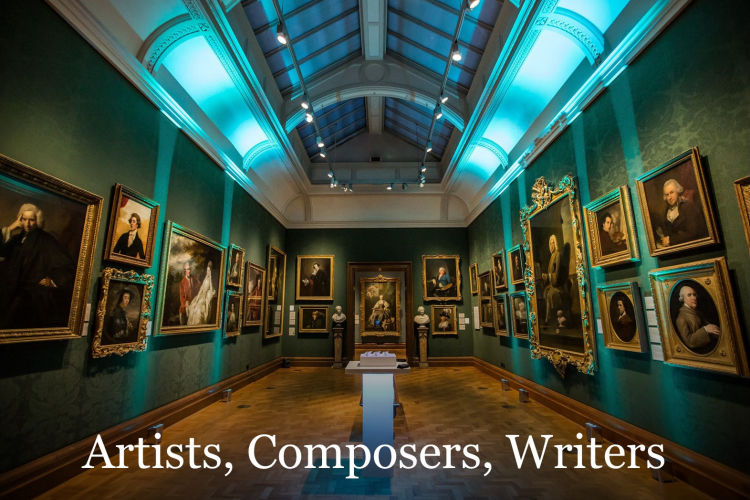1. Introspection, Exploration.
In his last years, the stone-deaf Beethoven wrote music that he could hear only in his head,
music that ignored formal expectations in search of a direct expression of struggle, anguish, and, at the end of his
final string quartet, transcendence. We will consider the question of LateStyle in other art forms also, with
a look at the late work of the Renaissance artists Raphael, Leonardo, Michelangelo, and Titian, and at Goya and Turner
in the 19th cenury, polar opposites in their innovations. And time permitting, we shall look at the last major poems
of Keats, who died young, and Yeats, who lived long enough to write a testament for an entire generation. The poems are
given in the texts handout above.
The script, videos, and images will be posted immediately after class.
Here are brief bios of the artists and poets considered in the class, listed in chronological order of birth.
You can access all biographies via the BIOS link on the syllabus page.
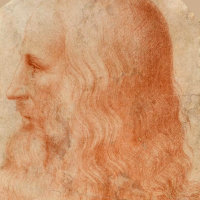 |
Leonardo da Vinci, 1452–1519. Florentine painter, musician, and man of science.
With Michelangelo and Raphael, one of the triumvirate of artistic geniuses that crown the High Renaissance. He trained in Florence with the painter Andrea Verrocchio before moving to the court of Ludovico Sforza in Milan. He spent the last years of his life at the court of François I in France. The naturalism and luminosity of his painting, and his effects of sfumato (or modeling as if by smoke), were widely influential. It is his notebooks, however, that are the best testament to the range of his genius, containing remarkable observations of the natural world, and mechanical inventions centuries before their time.
|
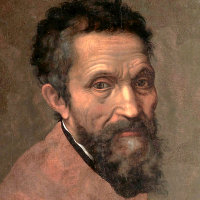 |
Michelangelo Buonarroti, 1475–1564. Florentine sculptor, architect, painter, and poet.
A towering universal genius, his work virtually defines the Italian High Renaissance. He made his name primarily as a sculptor in his native Florence, though he worked elsewhere as well. His most famous works, however, are in Rome: the ceiling of the Sistine Chapel (1508–12) and his work from 1546 as leading architect of the Basilica of St. Peters, one of a succession of masters who brought the building to its present form.
|
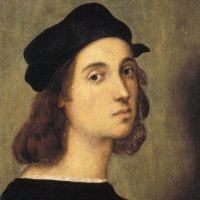 |
Raphael (Raffaello Sanzio), 1483–1520. Italian painter and architect.
One of the towering geniuses of the Italian Renaissance, Raphael was born in central Italy, and worked there until 1508, when he moved to Rome to decorate several stanze in the Vatican for Pope Julius II, and later his successor Leo X. The influence of these and other works of the period can be seen in religious art for many centuries to come.
|
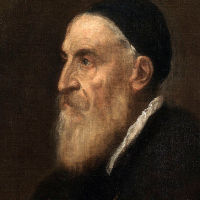 |
Tiziano Vecellio (Titian), 1485–1576. Venetian painter.
Arguably the greatest Venetian painter of the High Renaissance, he produced works in just about every genre over an exceptionally long career. Probably his greatest influence was in his handling of paint and use of color, which became a starting point for Rubens and others in the next century.
|
 |
Rembrandt Harmenzoon van Rijn, 1606–69. Dutch painter and printmaker.
The greatest artist of the Dutch Golden Age, he nonetheless retained his own style which set him apart from his contemporaries. There is a strong baroque influence earlier in his career, but his later work developed a quality of deep introspection in which the subject seems to glow within rich layers of paint.
|
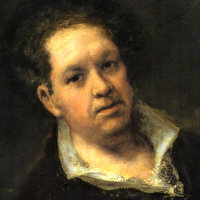 |
Francisco de Goya y Lucientes, 1746–1828. Spanish painter and printmaker.
A slow developer, he began as a somewhat conventional Rococo painter and tapestry designer, but developed into an insightful portraitist, and—after going totally deaf in 1792—a savage social critic as a printmaker, and painter of some of the most terrible events of his time. His series of "black paintings" from the end of his life display a shattering visionary intensity.
|
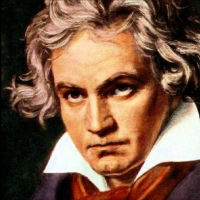 |
Ludwig van Beethoven, 1770–1827. German composer, working primarily in Vienna.
The dominant composer of his time, Beethoven wrote 9 symphonies, 16 string quartets, and 32 piano sonatas, among numerous other works. From about 1800 onwards, increasing deafness gradually put an end to his performing career, although he wrote some of his finest works when totally deaf. He is one of the first composers to exhibit a distinct late style.
|
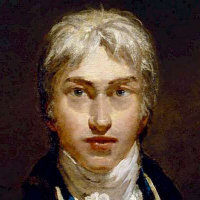 |
Joseph Mallord William Turner, 1775–1851. English painter.
Rivaled only by Constable, Turner was the dominant British landscape painter of the first half of the 19th century, he started his career with topographical views intended for engraving, and ended with works whose subjects were dissolved in veils of paint and light.
|
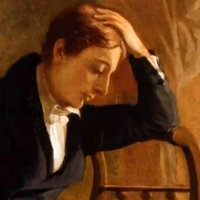 |
John Keats, 1795–1821. English poet.
Keats was a second-generation Romantic, contemporary with Byron and Shelley. By the time he died of tuberculosis at the age of 25, he had been publishing for less than four years. Nevertheless, later critics have hailed him as one of the greatest English poets, especially for his Sonnets and series of Odes.
|
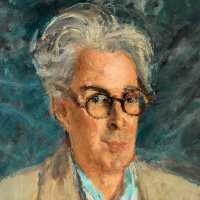 |
William Butler Yeats, 1865–1939. Irish poet, dramatist, and politician.
Although a Protestant of Anglo-Irish descent, Yeats was a major force in the Irish literary revival at the turn of the century, and a founder of the Abbey Theatre in Dublin. His poetry, which began in a lyrical late-Romantic manner, later became more modernist and more politically engaged. He served two terms as a Senator of the Irish Free State.
|




































